- Home
- Ramachandra Guha
India After Gandhi Revised and Updated Edition
India After Gandhi Revised and Updated Edition Read online
Dedication
For
Ira, Sasha and Suja:
lights on my coast
Epigraph
India is a pluralist society that creates magic with democracy, rule of law and individual freedom, community relations and [cultural] diversity. What a place to be an intellectual! . . . I wouldn’t mind being born ten times to rediscover India.
ROBERT BLACKWILL, departing US ambassador, in 2003
Nobody could be more conscious than I am of the pitfalls which lie in the path of the man who wants to discover the truth about contemporary India.
NIRAD CHAUDHURI,
The Autobiography of an Unknown Indian (1950)
A Note on Place Names
In recent years, the names of several towns and cities in India have been modified or changed – thus Bombay has become Mumbai, Madras has become Chennai and Calcutta has become Kolkata. Likewise, the Bangladeshi capital, Dhaka, was for much of the period covered by this book known as Dacca, while the Chinese capital, Beijing, was until the 1980s referred to as Peking. The usage in this book conforms to historical convention rather than linguistic precision. For example, the capital of Maharashtra is referred to as Bombay until we come to the time when its name was officially changed to Mumbai.
Contents
Cover
Title Page
Dedication
Epigraph
A Note on Place Names
Preface to the Second Edition
Prologue: Unnatural Nation
Part One: Picking up the Pieces
1. Freedom and Parricide
2. The Logic of Division
3. Apples in the Basket
4. A Valley Bloody and Beautiful
5. Refugees and the Republic
6. Ideas of India
Part Two: Nehru’s India
7. The Biggest Gamble in History
8. Home and the World
9. Redrawing the Map
10. The Conquest of Nature
11. The Law and the Prophets
12. Securing Kashmir
13. Tribal Trouble
Part Three: Shaking the Centre
14. The Southern Challenge
15. The Experience of Defeat
16. Peace in Our Time
17. Minding the Minorities
Part Four: The Rise of Populism
18. War and Succession
19. Leftward Turns
20. The Elixir of Victory
21. The Rivals
22. Autumn of the Matriarch
23. Life Without the Congress
24. Democracy in Disarray
25. This Son also Rises
Part Five: A History of Events
26. Rights and Riots
27. A Multi-polar Polity
28. Rulers and Riches
29. Progress and its Discontents
30. The Rise of the ‘BJP Systems’
Epilogue: A 50–50 Democracy
Acknowledgements
Notes
Index
Photo Section
About the Author
Praise
Also by Ramachandra Guha
Copyright
About the Publisher
Preface to the Second Edition
THIS BOOK WAS NOT my idea. In November 1997, a British publisher I had not heard of contacted me in Bangalore (as it then was). He had read an essay of mine in the Oxford historical journal, Past and Present, and wished to meet me. He was in Delhi soon; would I be there too?
As it turned out, I had a meeting in Delhi the week the publisher was in town. We met in his hotel, in a large airy atrium that served as a coffee shop. His name was Peter Straus, and he ran Picador, where he published, among other writers, V. S. Naipaul and Michael Ondaatje. He was carrying a copy of the Past and Present issue with my article in it. What, he asked, was the project I was working on now?
I pointed to the journal in his hands. I was, I told him, developing the essay he had read (on the social history of sport in colonial India) into a book. Would I consider abandoning that project, asked Peter Straus, and write a history of independent India instead?
This second question left me speechless. The scale and scope of the book he was suggesting seemed beyond my ambitions, and my training. I had begun writing occasionally for the press, but I still saw myself as principally an academic historian, who wrote for his peers and for university students. The books I had previously written had been on topics I had chosen myself: a social history of peasant protest in the Himalaya, two co-authored books on environmental conflicts, a biography of the maverick anthropologist Verrier Elwin. All had been published by university presses, and all had been highly focused, bounded by theme and/or region. How could I write, for a general readership, a single-volume history of a country as large and as diverse as India?
I am not normally at a loss for words, either in conversation or in print. Now, as I stayed silent, the visiting publisher asked some more questions. Was it not the case that historians of India stopped their narratives at 1947? Now that the nation had observed the fiftieth anniversary of its founding, would not a look back at its complicated and tumultuous history be a subject worthy of scholarly analysis? Would not such a book interest younger Indians, not to speak of the world at large? Did I not (as the article in Past and Present showed) greatly enjoy reading unpublished letters and manuscripts, as well as newspapers on microfilm?
To all these questions I nodded assent. So then, said the publisher, I agreed that such a history needed to be written. Why not research and write it myself? Why not at least think about it?
We left it at that. A month later, Peter Straus rang me in Bangalore, and asked whether I had given the idea further thought. I had, indeed, and sensed its appeal. He then told me to send a formal proposal, which I did, whereupon a contract was signed in March 1998, with a delivery date specified for March 2002, or four years later.
Now the job had to be done, the research begun. Where would I start? As I explain in the prologue to the first edition, had I been a historian of Europe or of a European country, commissioned to write a history of his country or continent since the end of World War II, I would have ordered five hundred books from the library – scholarly studies on politics, culture, law, economic policy and social change, with biographies of major or significant politicians thrown in. And, with these in hand, I would have attempted a work of synthesis.
In India, such secondary works were not available, for contemporary history as a branch of history had not yet been born. I had therefore to assemble the relevant primary materials on my own. The National Archives had plenty of state records on the colonial period, but precious few for the period since 1947. Fortunately, there was the Nehru Memorial Museum and Library (NMML), which had the private papers of hundreds of influential and important Indians. The NMML also had a superb collection of newspapers and journals on microfilm.
I spent many enjoyable months at the NMML, looking through its extraordinarily rich collection of (mostly unused) materials on the post-1947 period. The endnotes to this book provide more details on the numerous collections I consulted. Among them, the two that were perhaps most revealing were the papers of C. Rajagopalachari, the great friend-turned-critic of Jawaharlal Nehru, and of P. N. Haksar, Indira Gandhi’s closest political confidant between 1967 and 1974.
The NMML also housed the old newspapers through which I tracked or fleshed out major events and controversies, the records of the Indian Parliament, as well as runs of left- and right-wing (as well as centrist) journals that conveyed the flavour and intensity of the many and various politi
cal debates of the period. This archive-cum-library was the bedrock of my research, but I also found vaulable materials in archives elsewhere in India and in the United Kingdom.
Those who read my newspaper columns know that I am a man of strong opinions. However, when it comes to my scholarly work I try to let the research do the talking. No writer can entirely hide or suppress his biases, but I did want to write this book in as non-ideological a manner as possible. I was seeking to interpret, not to judge. I wished to narrate, in as rich detail as I could, the conflict-ridden history of this unnatural nation and unlikely democracy. I also wanted the book to be comprehensive in scope – to deal with politics and economics, religion and language, caste and gender, although the confines of a single book and the limitations of an individual scholar surely mean that my reach has exceeded my grasp.
I was writing this book in the first decade of the twenty-first century, when, as India’s economy grew, there was much talk of our becoming a superpower. The materials I was finding in the archives told an altogether different story. As the new nation struggled with the residues of Partition, with the problems posed by the settlement of refugees and the integration of the princely states, as both Hindu fundamentalism and a Communist insurgency gathered pace, few thought India would survive. For how could democracy and pluralism take root in this desperately poor, deeply divided and culturally heterogeneous country?
In the early years of independence, many obituaries of the new nation were written, confident anticipations that the Indian Republic would descend into civil war, balkanize into many parts, experience mass famine, or become a military dictatorship. In subsequent decades they continued to be written; whenever two monsoons failed in succession, or a prime minister died, or a major riot took place, some (professedly) serious Western writer would conclude that the project of a united and democratic India had failed.
But it didn’t. That India survived despite the massive challenges it faced made me appreciate, even more than I had previously, the qualities of our first generation of political leaders – Nehru, Patel, Ambedkar, Rajagopalachari and their ilk – and the courage with which they confronted these challenges and the sagacity with which they overcame them. Perhaps no nation was born in more adverse circumstances; perhaps no new nation had such a remarkable concatenation of leaders to see it through the difficulties it faced in its early years. Had they not been there, or had they not acted as they did, those predictions of doom would surely have come to pass.
I admired these leaders, but this could not be a triumphalist book. For while India may have survived, throughout its history as a nation deep fissures persisted. I had to write about the question of Kashmir, yet in the course of my research I found that, even before the Kashmiris, a section of the Nagas had rejected Indian sovereignty. The conflict in Nagaland provided a counterpoint to the conflict in Kashmir, the two ends of the Indian Himalaya where so many people were not reconciled to being citizens of the Republic. Meanwhile, I had also to research and write about the vulnerability of Dalits, Muslims and tribals, three social groups who have struggled long and hard, if with decidedly mixed results, to achieve equal status with upper-caste Hindus.
I enjoyed the research enormously. The notebooks piled up (I had not then acquired a laptop), each filled in from beginning to end, the set covering a large shelf of my study in Bangalore. Other shelves contained out-of-print books and pamphlets acquired from second-hand bookstores around the world, relevant to my research. But how could I begin to make sense of, how would I structure, this mountain of material I had assembled?
It took me an unconscionably long time to think through a viable framework for the book, to design and decide upon the themes each chapter would cover, the order in which the chapters themselves would appear. Meanwhile, the deadline I had signed up for had come and gone. I had opened a folder on my desktop in which the drafts of the chapters I was writing were placed, one by one. The folder was called ‘Mythical History Book’, for I had no idea if, or ever, I would complete it. However, I eventually did, a full four years after the formal deadline had passed, when I finally sent Peter Straus a folder renamed ‘History Book Revised’.
The book was submitted very late. It was also far longer than the publisher had hoped or bargained for. A friend who knew the American mind (and market) intimately told me that on no account should I exceed five hundred pages. A friend with domain knowledge about the United Kingdom thought that for a book of this kind four hundred pages would be an optimum length. Indians themselves were not known for being partial to large tomes, unless these were fictional (or mythical). The conventional wisdom was against me, but fortunately my editors could cut only 5,000 words from my draft, so a mastodon of 900 pages was the result.
The first edition of India after Gandhi was published in 2007. However, for all that it covered, and for all its length, the book could not remotely hope to have analysed all that was important or significant in the life of India or Indians. Fortunately, there has since been a rapid growth of interest in contemporary history, with many young scholars, Indian and foreign, writing fine dissertations and books on specific aspects of the history of India since Independence.
It is now ten years since India after Gandhi appeared. In this time the Republic has witnessed two general elections; the fall of the Congress and the rise of Narendra Modi; a major anti-corruption movement; more violence against women, Dalits, and religious minorities; a wave of prosperity for some states, regions and classes but the persistence of poverty for others; comparative peace in Nagaland but more (and perhaps greater than ever before) discontent in Kashmir; and much else. To take account of all this, I have prepared this revised and expanded edition, which brings the narrative up to the present. I have re-organized Section Five chronologically (in the earlier edition this last section followed a thematic approach), added two chapters based entirely on new material, and rewritten the epilogue.
All the books I have written (or will write) have been on my own initiative. Except this one. I am deeply grateful to a visionary publisher for giving me the chance to write the history of my country, and for doing so when he did. For I could not have written this book in my thirties, when I did not have the experience, or in my fifties, when I may not have had the energy.
Ramachandra Guha
Bengaluru
21 August 2016
Prologue
Unnatural Nation
I
Because they are so many, and so various, the people of India are also divided. It appears to have always been so. In the spring of 1827 the poet Mirza Asadullah Khan Ghalib set out on a journey from Delhi to Calcutta. Six months later he reached the holy Hindu city of Banaras. Here he wrote a poem called ‘Chirag-i-Dair’ (Temple Lamps), which contains these timeless lines:
Said I one night to a pristine seer
(Who knew the secrets of whirling Time),
‘Sir, you well perceive,
That goodness and faith,
Fidelity and love
Have all departed from this sorry land.
Father and son are at each other’s throat;
Brother fights brother. Unity
and Federation are undermined.
Despite these ominous signs
Why has not Doomsday come?
Why does not the Last Trumpet sound?
Who holds the reins of the Final Catastrophe?’1
Ghalib’s poem was composed against the backdrop of the decline of the Mughal Empire. His home territory, the Indo-Gangetic plain, once ruled by a single monarch, was now split between contending chiefdoms and armies. Brother was fighting brother; unity and federation were being undermined. But even as he wrote, a new (and foreign) power was asserting its influence across the land in the form of the British, who were steadily acquiring control of the greater part of the subcontinent. Then in 1857 large sections of the native population rose up in what the colonialists called the Sepoy Mutiny and Indian nationalists later referred to as the
First War of Indian Independence.
Some of the bloodiest fighting was in Ghalib’s home town, Delhi – still nominally the capital of the Mughals and in time to become the capital of the British Raj as well. His own sympathies were divided. He was the recipient of a stipend from the new rulers, yet a product of Mughal culture and refinement. He saw, more clearly than the British colonialist did then or the Indian nationalist does now, that it was impossible here to separate right from wrong, that horrible atrocities were being committed by both sides. Marooned in his home, he wrote a melancholy account of how ‘Hindustan has become the arena of the mighty whirlwind and the blazing fire’. ‘To what new order can the Indian look with joy?’ he asked.2
An answer to this question was forthcoming. After the events of 1857 the Crown took over control of the Indian colonies. A sophisticated bureaucracy replaced the somewhat ad-hoc and haphazard administration of the old East India Company. New districts and provinces were created. The running of the state was overseen by the elite cadre of the Indian Civil Service supported by departments of police, forests, irrigation, etc. Much energy (and money) was spent on building a railway network that criss-crossed the land. This contributed enormously to the unity of British India, as well as to its stability, for now the rulers could quickly move troops to forestall any repeat of 1857.
II
By 1888 the British were so solidly established in India that they could anticipate, if not a thousand-year Raj, at least a rule that extended well beyond their own lifetimes. In that year a man who had helped put the Raj in place gave a series of lectures in Cambridge which were later published in book form under the simple title India. The man was Sir John Strachey. Strachey had spent many years in the subcontinent, ultimately becoming a member of the Governor General’s Council. Now in retirement in England, he set his Indian experience against the background of recent political developments in Europe.
Large chunks of Strachey’s book are taken up by an administrative history of the Raj; of its army and civil services, its land and taxation policies, the peculiar position of the ‘native states’. This was a primer for those who might work in India after coming down from Cambridge. But there was also a larger theoretical argument to the effect that ‘India’ was merely a label of convenience, ‘a name which we give to a great region including a multitude of different countries’.

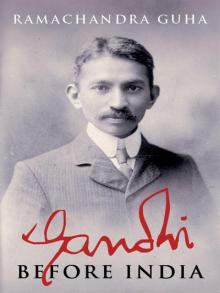 Gandhi Before India
Gandhi Before India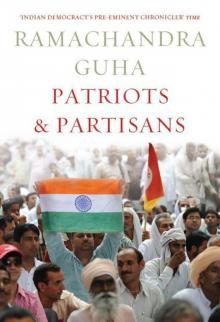 Patriots & Partisans
Patriots & Partisans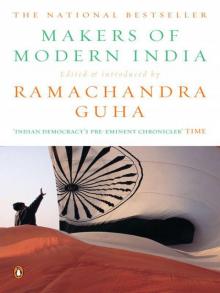 Makers of Modern India
Makers of Modern India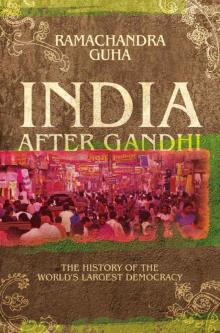 India After Gandhi: The History of the World's Largest Democracy
India After Gandhi: The History of the World's Largest Democracy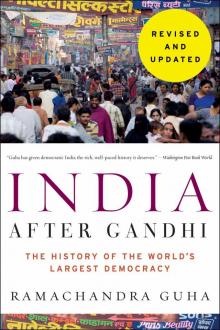 India After Gandhi Revised and Updated Edition
India After Gandhi Revised and Updated Edition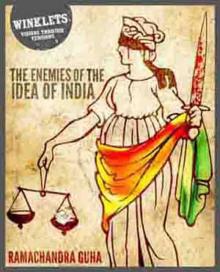 The Enemies of the Idea of India
The Enemies of the Idea of India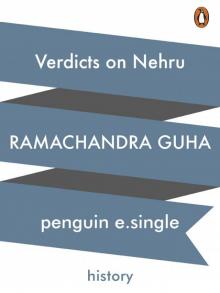 Verdicts on Nehru
Verdicts on Nehru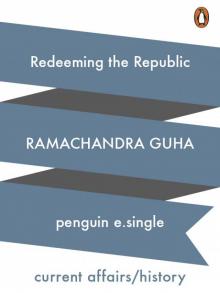 Redeeming the Republic
Redeeming the Republic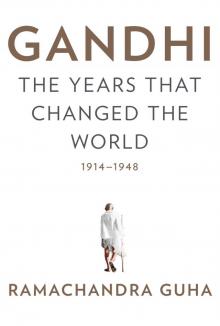 Gandhi
Gandhi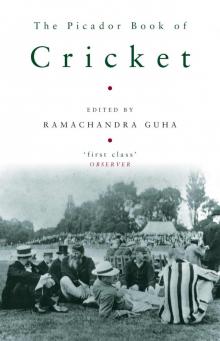 The Picador Book of Cricket
The Picador Book of Cricket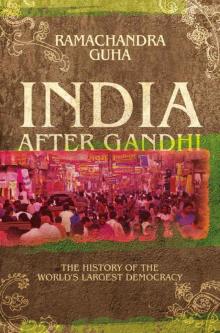 India After Gandhi
India After Gandhi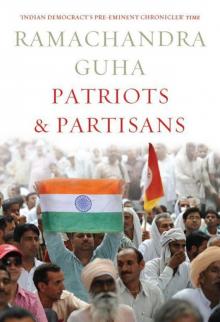 Patriots and Partisans: From Nehru to Hindutva and Beyond
Patriots and Partisans: From Nehru to Hindutva and Beyond